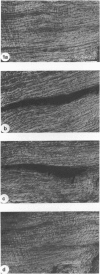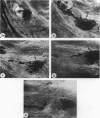Abstract
The identification and distribution of mechanoreceptors in the cranial cruciate ligament of the cat (analogous to the anterior cruciate ligament in other species) was studied histologically using a modified celloidin embedding technique to achieve serial sectioning of bone-ligament-bone preparations with gold chloride staining. We identified distinctive large elongated structures situated between the collagen bundles of the ligament (resembling endings described as Freeman and Wyke type III; also termed Golgi tendon receptors). These endings were found near the middle of the ligament well away from the bone-ligament junction. Axons seen entering only one end of each type III ending helped to confirm its neural basis. While we saw structures resembling types I and II endings (i.e. Ruffini and pacinian endings, respectively) in individual sections, serial sections failed to reveal convincing evidence of their existence. Such structures almost always appeared to be vascular in nature on adjacent sections, with vessels entering and exiting. We conclude that serial sections are critical to interpreting the presence or absence of mechanoreceptors.
Full text
PDF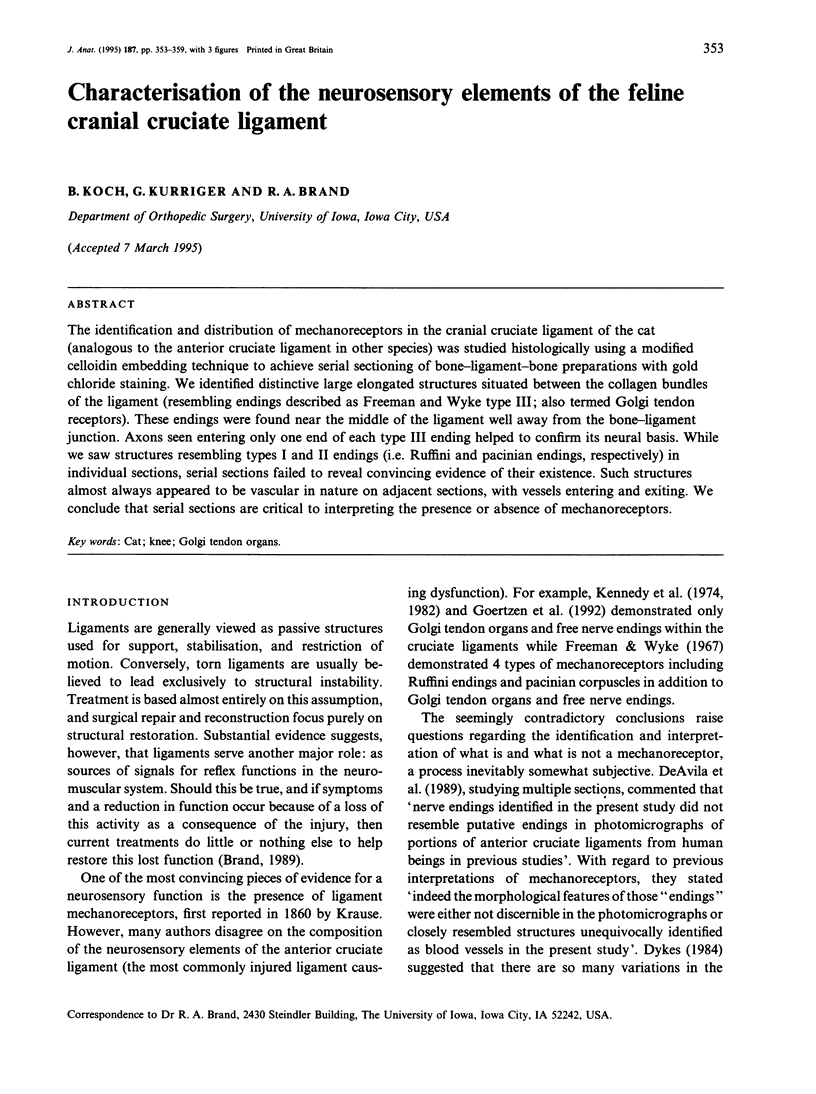

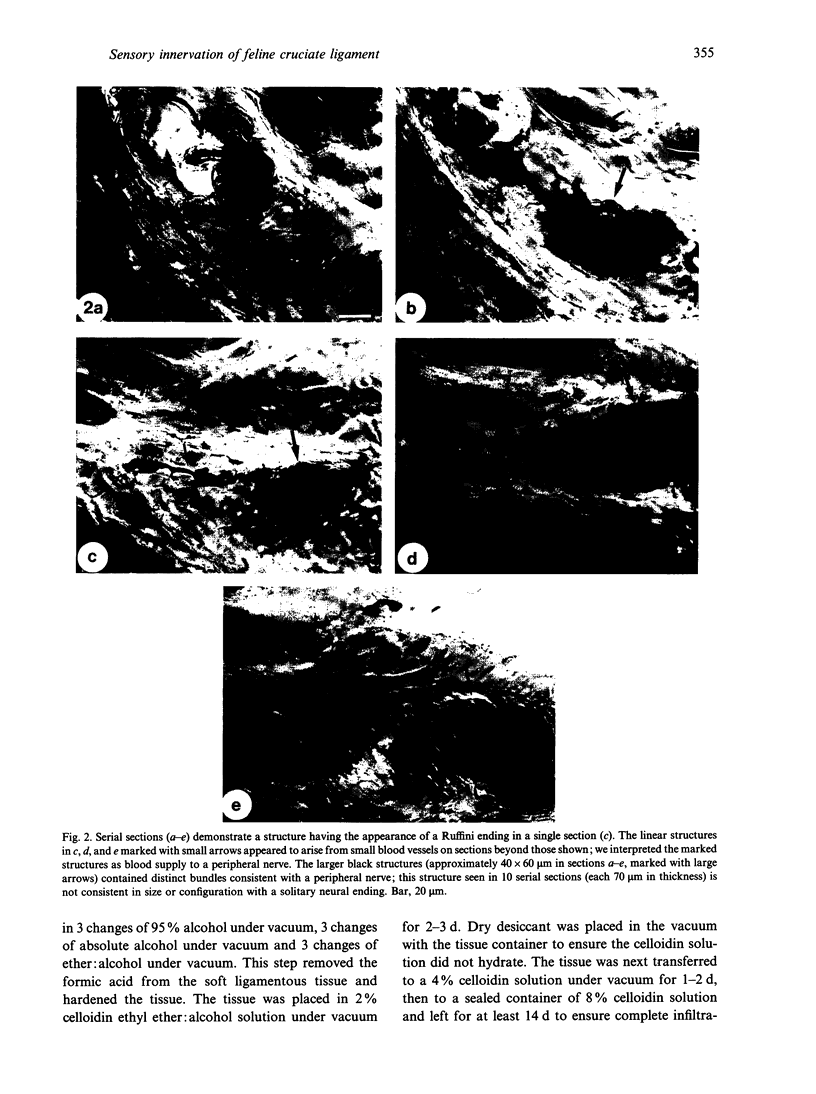
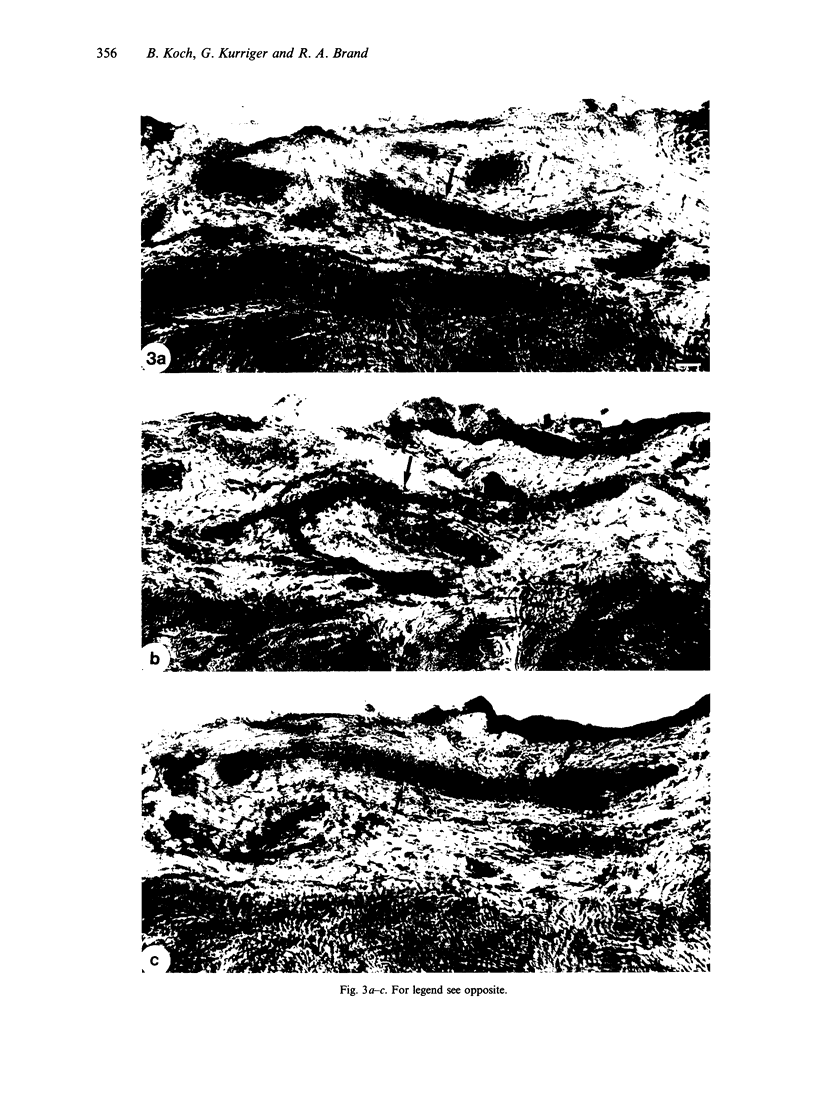
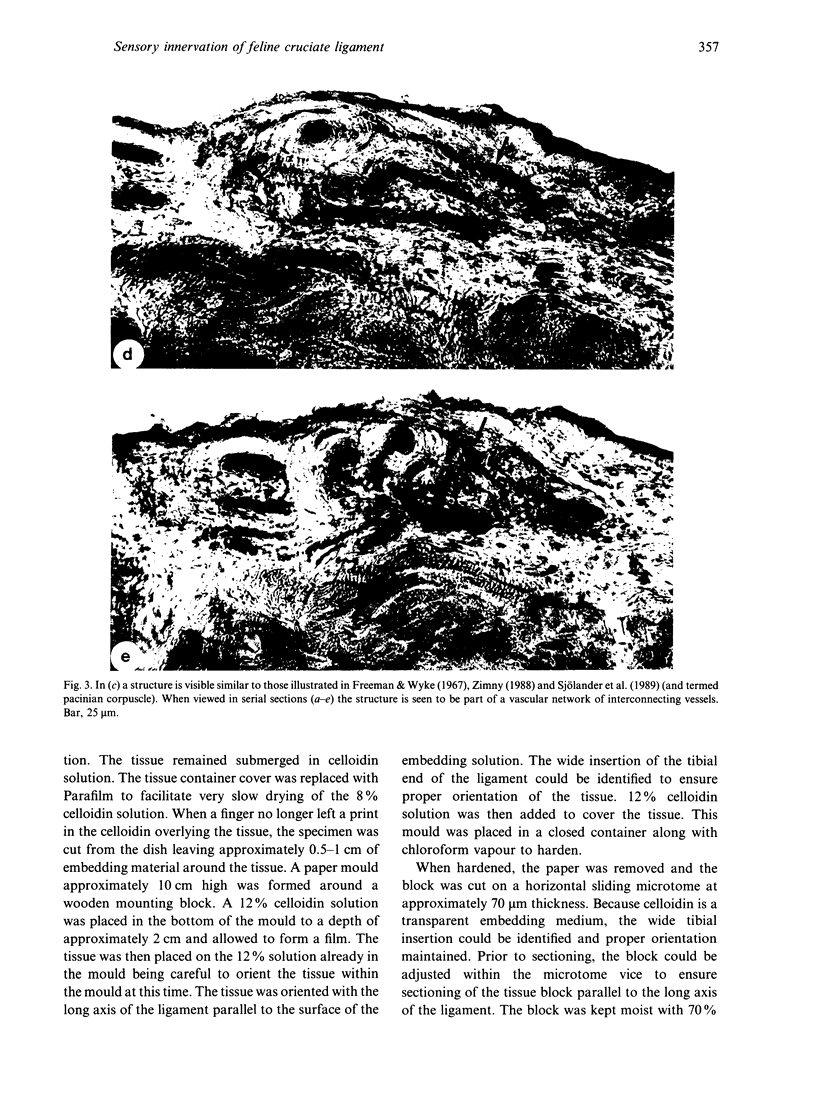
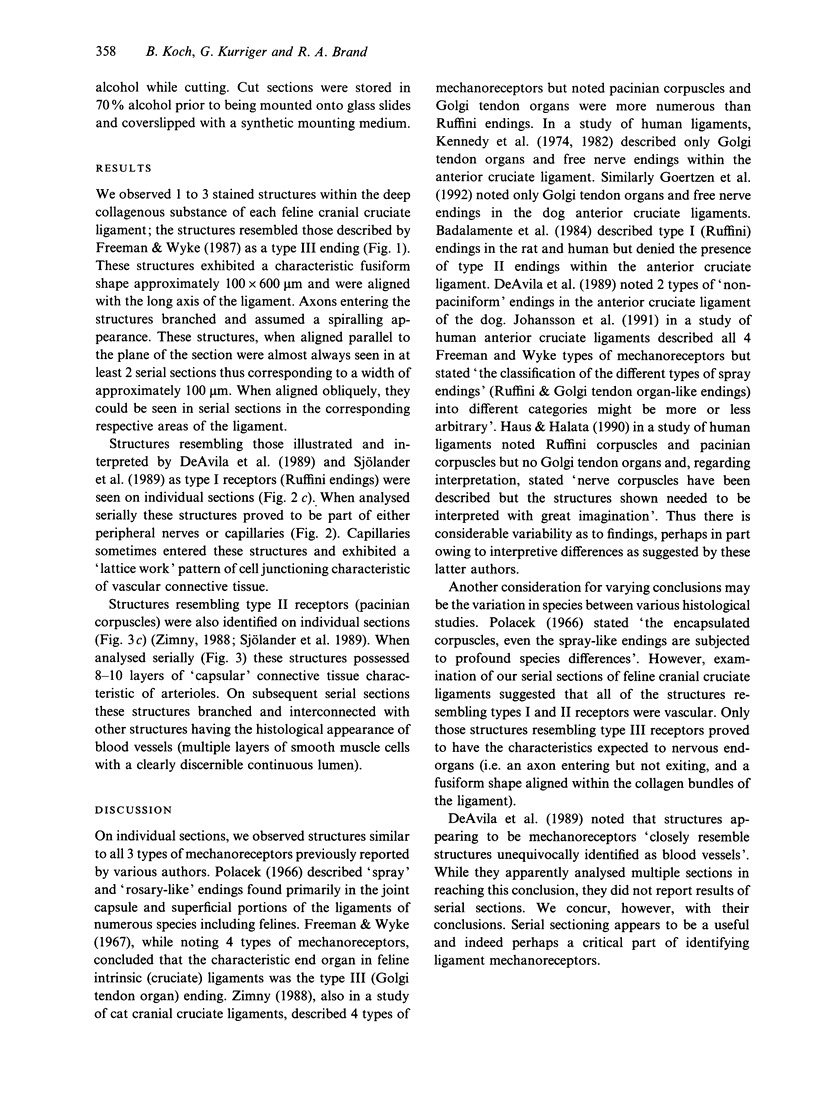
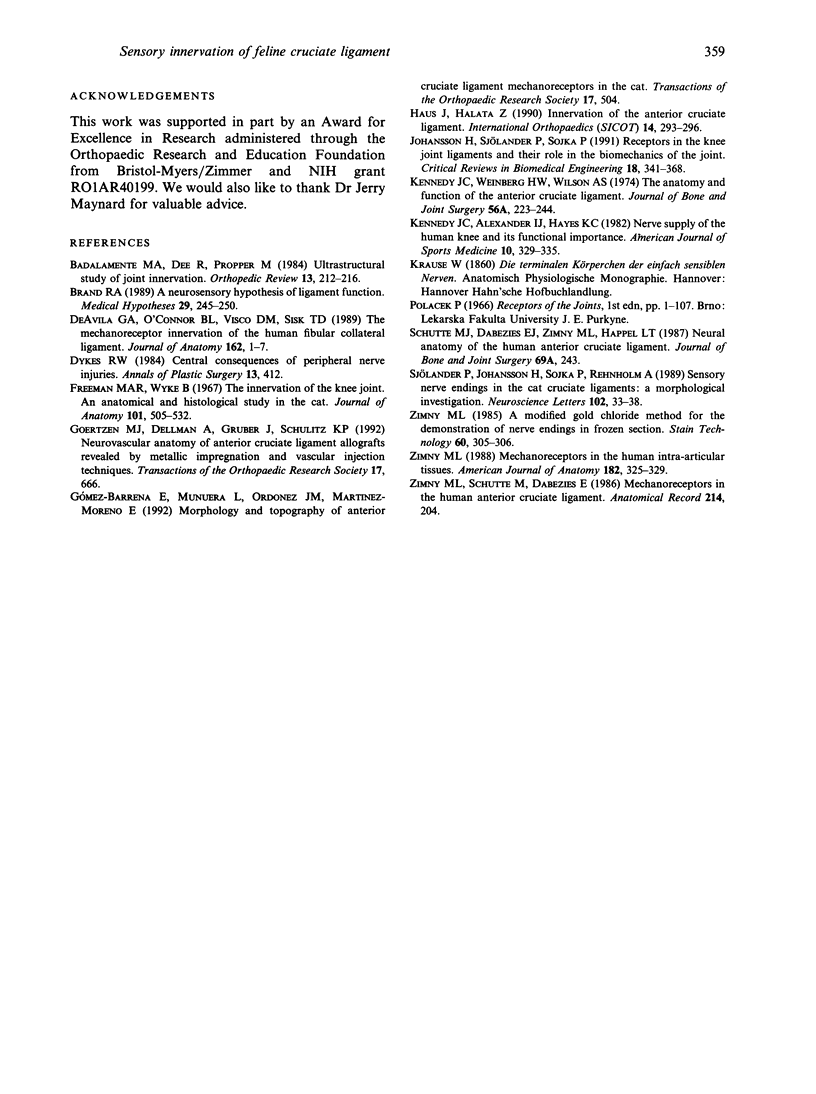
Images in this article
Selected References
These references are in PubMed. This may not be the complete list of references from this article.
- Brand R. A. A neurosensory hypothesis of ligament function. Med Hypotheses. 1989 Aug;29(4):245–250. doi: 10.1016/0306-9877(89)90106-0. [DOI] [PubMed] [Google Scholar]
- Dykes R. W. Central consequences of peripheral nerve injuries. Ann Plast Surg. 1984 Nov;13(5):412–422. doi: 10.1097/00000637-198411000-00009. [DOI] [PubMed] [Google Scholar]
- Haus J., Halata Z. Innervation of the anterior cruciate ligament. Int Orthop. 1990;14(3):293–296. doi: 10.1007/BF00178762. [DOI] [PubMed] [Google Scholar]
- Johansson H., Sjölander P., Sojka P. Receptors in the knee joint ligaments and their role in the biomechanics of the joint. Crit Rev Biomed Eng. 1991;18(5):341–368. [PubMed] [Google Scholar]
- Kennedy J. C., Alexander I. J., Hayes K. C. Nerve supply of the human knee and its functional importance. Am J Sports Med. 1982 Nov-Dec;10(6):329–335. doi: 10.1177/036354658201000601. [DOI] [PubMed] [Google Scholar]
- Kennedy J. C., Weinberg H. W., Wilson A. S. The anatomy and function of the anterior cruciate ligament. As determined by clinical and morphological studies. J Bone Joint Surg Am. 1974 Mar;56(2):223–235. [PubMed] [Google Scholar]
- Schutte M. J., Dabezies E. J., Zimny M. L., Happel L. T. Neural anatomy of the human anterior cruciate ligament. J Bone Joint Surg Am. 1987 Feb;69(2):243–247. [PubMed] [Google Scholar]
- Sjölander P., Johansson H., Sojka P., Rehnholm A. Sensory nerve endings in the cat cruciate ligaments: a morphological investigation. Neurosci Lett. 1989 Jul 17;102(1):33–38. doi: 10.1016/0304-3940(89)90303-0. [DOI] [PubMed] [Google Scholar]
- Zimny M. L., Schutte M., Dabezies E. Mechanoreceptors in the human anterior cruciate ligament. Anat Rec. 1986 Feb;214(2):204–209. doi: 10.1002/ar.1092140216. [DOI] [PubMed] [Google Scholar]
- Zimny M. L., St Onge M., Schutte M. A modified gold chloride method for the demonstration of nerve endings in frozen sections. Stain Technol. 1985 Sep;60(5):305–306. doi: 10.3109/10520298509113929. [DOI] [PubMed] [Google Scholar]
- von Bartheld C. S., Claas B., Münz H., Meyer D. L. Primary olfactory projections and the nervus terminalis in the African lungfish: implications for the phylogeny of cranial nerves. Am J Anat. 1988 Aug;182(4):325–334. doi: 10.1002/aja.1001820404. [DOI] [PubMed] [Google Scholar]



